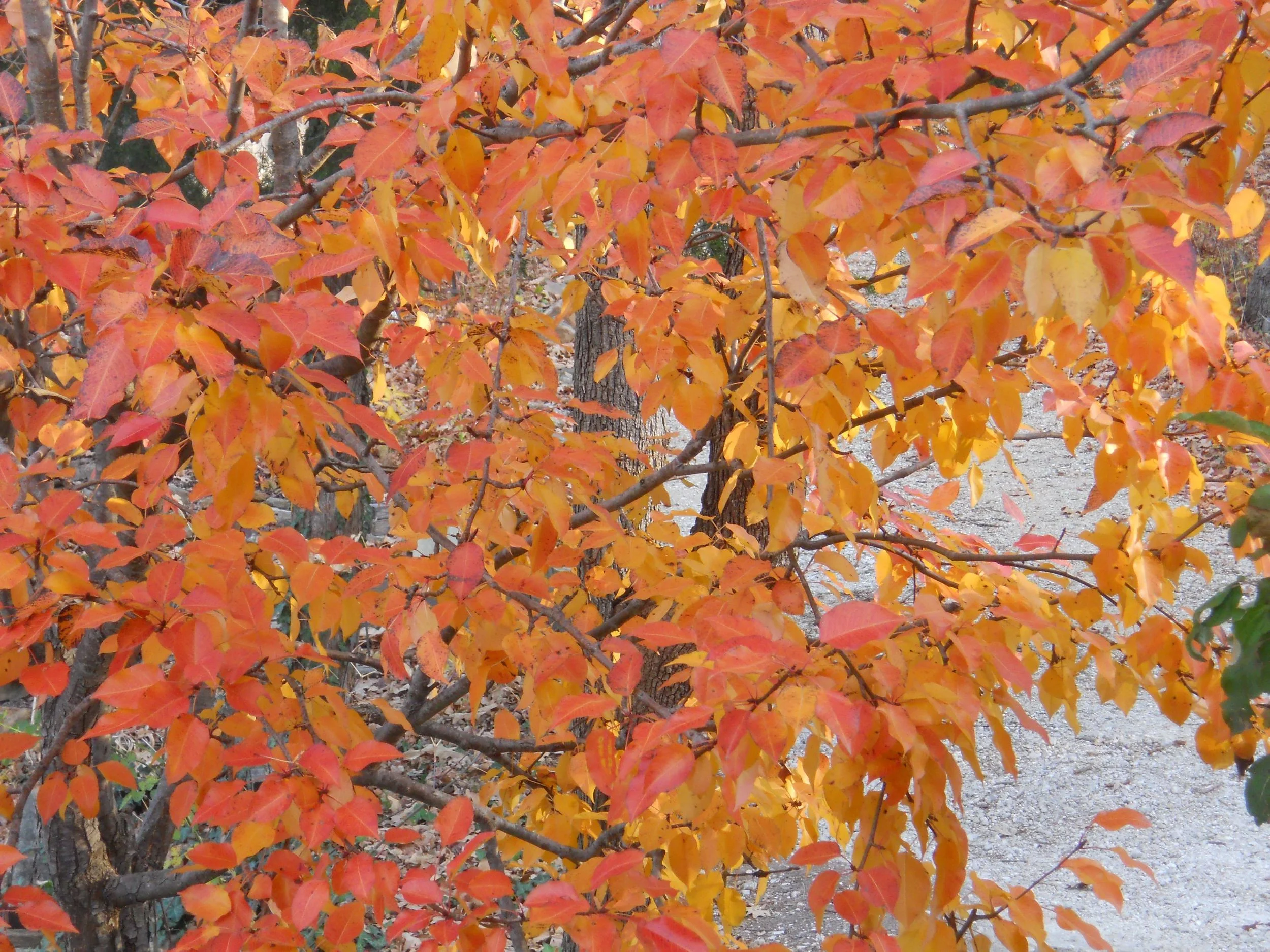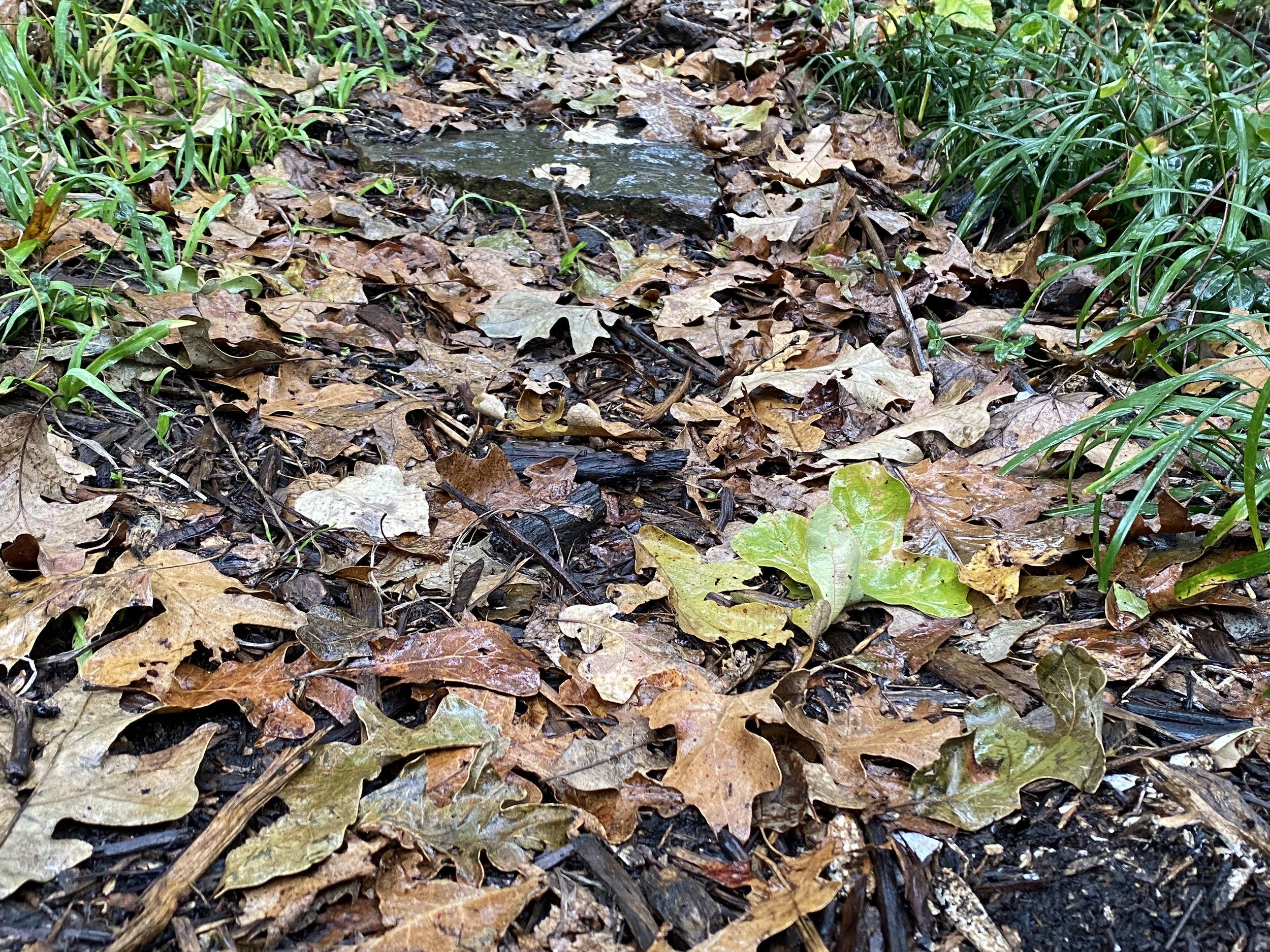Ten Ways to Use Leaves
/Leaves are starting to cover my mulched garden paths. (Photo by Charlotte Ekker Wiggins)
Leave the Leaves
For years neighbors would ask me why I left my leaves on the garden in the fall. Their main concern was that the leaves would turn the soil too acid for anything to grow.
Besides sitting on the side of a limestone hill surrounded by woods and not having any grass growing, the thought of trying to rake leaves was daunting. When I realized leaves decompose into organic soil conditioners, I was sold. Now more than 30 years since I started this practice, my latest soil test shows the soil - I’m just excited to be able to say I actually have some soil now - is close to the middle of the scale so leaving leaves does not necessarily acidify soil.
Ten Ways to Use Leaves
Since I have so many leaves, and have been known to haul more back home from our recycling center, reconsider bagging that ready powerhouse that you could easily use. Here’s how I use leaves on my hillside:
Added to compost bins. Good compost is half green (kitchen scraps) and half brown (leaves). I stuff my composters full of dried leaves in fall. By the time I’m working my garden in the spring I have a ready source of compost waiting for me. Yes, it takes longer for compost to cook over fall and winter but I don’t need it then.
I cover all of my flower beds with leaves to protect young plant starts and established perennials from winter ice. I prefer to use mulched leaves for this so I haul those back from our recycling center. By spring it’s amazing how few leaves are left because they slowly decomposed over fall and winter.
The decomposed leaves also feed soil microbes, bacteria and mycelium and they, in turn, feed the plants.
Flower beds also have open spots for ground nesting bumble bees so the leaves protect those nests. I also have ladybugs and other beneficial insects that depend on leaves for winter cover.
If I am planting trees in fall, I line the bottom of the holes with wet leaves to help keep tree roots hydrated.
When I remove a hillside limestone rock. I fill the holes with packed leaves so no one will fall into the hole. After a few years, that hole becomes an excellent planting hole full of decomposed leaves that have turned to soil food.
In spring, I save whatever leaf pile is left and fill new plant holes with leaves. The leaves hold in water and keep feeding the surrounding soil which feeds my plants.
When mulching my paths, which I do about every three years, I will first line the paths with leaves and cardboard, then add the mulch. The cardboard and leaves cuts down on plant growth although I do have some paths I had to move because native plants grew there.
9. If you live in a more urban environment and have a lawn mower, mow your leaves into smaller pieces and rake them onto flower beds. Leave some on your grass, too. The smaller pieces will decompose faster and will feed the soil that’s growing that expensive grass you planted. A good rule of thumb is about half an inch of shredded leaves.
10. Bag your leaves in black plastic bags and stash them where rain and sun will cook them. One of my brothers bagged leaves and forgot about them behind his garage. When I was visiting and helping him clean up the yard, we pulled the bags out and found lovely decomposed leaves that looked like compost. instead of having them hauled off, we spread the composted leaves all over his flower beds. He said the leaves had been sitting there for about a year.
If you don’t have leaves, invite your neighbors to bring over theirs.
The more you use them the more you will appreciate what leaves can do in your garden!












